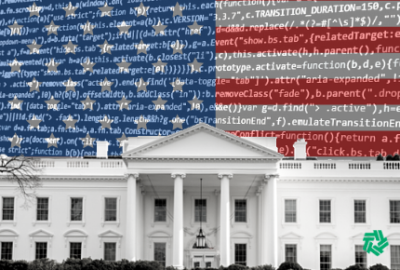Data remains biggest obstacle to meeting 2023 deadline for TBM
Agencies have to start using the full taxonomy under the Technology Business Management (TBM) standards as part of their fiscal 2023 budget requests, but several...
The deadline for agencies to fully implement the Technology Business Management (TBM) framework is technically three months away, about the time when initial budget requests for fiscal 2023 will go to the Office of Management and Budget.
Despite working on implementing TBM for the better part of four years, agencies continue to struggle with the data that is required to drive decisions and compare their costs with private and public sector experts.

“I couldn’t do benchmarking without having that four years of data, having the ability to have that trending and the comparison and that understanding of the data. But when you look federalwide, some agencies that have really matured around using the taxonomy are definitely looking at benchmarking,” said Maria Roat, the deputy federal chief information officer, during a webinar sponsored by ACT-IAC. “I want to caution around benchmarking. You just can’t say ‘Hey, I’m going to start with benchmarking,’ without having a pretty good read on your data because you don’t want to have flawed data and try to do benchmarking.”
And too many agencies still have flawed data, making it harder to get the expected value of TBM.
Roat said the governmentwide maturity around TBM and data isn’t quite there yet.
“While we’re continuing to make adjustments to the fiscal 2022 [budget] and looking at cutting down on the data requirements and what we’re getting at the Office of Management and Budget level, you can’t put the cart before the horse on the benchmarking because you don’t want to use flawed data. But perfection is the enemy of good enough. You want to have good enough data to be able to start doing benchmarking, and figure out in what areas that you want to compare yourself to,” she said. “There’s a lot of levers and a lot of moving parts on it, and when you make the decision and the timing on starting to do benchmarking, because the Community of Practice said we’re going to benchmark against industry well, how do you know you have good data, and it’s not flawed? Can we compare agency to agency? Sometimes you can, sometimes you can’t, depending on the size of the agency, and what parameters you’re looking. There’s a lot of factors to consider in the benchmarking. I think there’s value in it.”
Kelly Morrison, director of digital transformation and management at Grant Thornton Public Sector and a former a performance analyst in OMB’s Federal Chief Information Officer’s office, said without a baseline it will be difficult for agencies to improve management, governance, strategic budgeting and oversight of IT spending.
“Agencies have to orient investments in IT around IT services/solutions being provided and be able to see how new investments or projects enhance existing IT services or create new services and how those services are enabling mission and business objectives — providing a clear line of sight,” she said in an email to Federal News Network.
Some of those changes to IT project data OMB is considering may include removing 17 fields and adding seven new ones to the IT data management reporting requirements that help feed the capital planning and investment control (CPIC) efforts.
And email obtained by Federal News Network from March outline some of the possible changes OMB proposed to the CIO community. The proposed removal of data include the requirement to outline how the investment matches to the Federal Enterprise Architecture’s Business Reference Model (BRM); the requirement to offer alternatives to cloud computing; and detailing total spend on infrastructure-, platform-, software-as-a-service and managed services.
The new data fields under consideration include questions focused on how projects are adequately implementing incremental development methodologies, including how often the agency is delivering new capabilities.
“As part of the larger federal IT dashboard modernization effort, GSA will be transitioning IT management data collection to a new approach called ‘IT Collect Application Programming Interface,’” the email stated. “The new application will take advantage of a modernized architecture, simplified coding language, longitudinal data collection and a ‘flat ledger’ designed to improve both the usability of the data being provided as well as reduce future costs when making data collection changes.”
The IT Collet API also will support OMB’s final requirements for the development of the fiscal 2023 budget request.
Data becoming more consistent
The data, both under TBM and more broadly for budget development, has been inconsistent over the years.
Keith Bluestein, the Small Business Administration’s CIO, said there was a time when a CIO’s office would send data to senior leadership to present to the President’s Management Council and find out later that the PMC received totally different data from OMB.
Bluestein said OMB and the data is much more consistent today than four or five years ago.
“The challenge was making sure that everybody was going to the same data source and it was being provided to the same place,” he said. “It’s tough to kind of get your arms around what that true data set is, and to make sure that’s the only one that’s going out of here.”
Dan York, the director of IT Spending Transparency at GSA, said this is why data standards and data quality is so important.
“The sooner we have actual standards by which we can capture IT and the acquisition systems or the FM financial management systems, budget execution systems, the sooner we can begin the process of automating the those data poles,” he said. “When we automate, we take the human error out of it. We take the fat finger errors out. We take the program manager guessing what their budget is and what they spent. That really allows the program managers to focus on the schedule, the performance, the risks of their program, and less of the manual data entry because we can pull those from auditable authoritative systems of record. Understanding what data we need, creating the standards by which to collect it in a system of record, and then automating that collection in such a way where we can really have the humans focus on human work, and have the machine focus on machine work. That’s really going to clean up data quality throughout the federal space.”
Roat said at the event OMB started focusing on data standards in 2019 with a focus on realigning product and service codes (PSC). OMB and the CIO Council removed 20 PSCs and realigned 40 others to abide by the TBM taxonomy overall.
“This past year the CIO Council took on a project to take a holistic look at the IT portfolio of the federal government, not just looking at CPIC, major investments and the cost, but really look at holistically what that portfolio is. I challenged the team to say, what are the core requirements that agencies have to report on? What does OMB need? What will help across the federal government?” she said. “We went back to basics and tore down all the way down to what’s required in law, the definition of CPIC, what’s required for budget submissions because even as we try to do multiyear approaches to modernization, if you don’t have good data to support that even trying to look forward, that’s going to be really hard.”
She said these changes will eventually be in Circular A-11.
Policy, legislation needed?
Grant Thornton’s Morrison said it’s great that the TBM taxonomy is being baked into the Federal Integrated Business Framework (FIBF) and Product Service Codes (PSCs) but the taxonomy alone doesn’t provide the full value potential TBM offers.
“Policy and or legislation is needed to maintain the focus for agencies to implement TBM holistically, and for the federal government to continue baking TBM into the way the federal government does business/operates — for instance — updates to sub budget object class codes in financial management systems, incorporating the enterprise program inventory required by the Taxpayer Right to Know Act into TBM so that all IT costs can be aligned with the program inventory — both of these examples require engagement form communities outside of IT, thus reinforcing the focus of the panel,” she said. “TBM is not just an IT initiative, it requires the full CXO suite policy or legislation is likely needed to hold agencies accountable.”
Morrison said that’s why it’s important for OMB to reinforce and agencies to understand TBM isn’t a CIO’s job.
“There was previously a TBM executive steering committee with OMB and agency CXO leadership spanning IT, budget, finance, acquisition, human capital and performance. Unless this is happening at OMB and the CXO Councils, it is going to be up to every agency to push the boulder up the hill to affect the desired changes,” Morrison said in an email to Federal News Network. “This is why TBM was included in the prior President’s Management Agenda and as a cross-agency priority goal. TBM needs to be a holistic management priority tracked at the PMC level and for which agency deputy secretaries/administrators are responsible for.”
GSA’s York said more and more agencies understand the potential of TBM, as the community of practice grew to more than 650 members from 20 when the CIO Council launched it in 2017.
“There’s real community approach to choosing projects that they want to implement and help with their maturity. We are sharing the results of those projects across the entire government helps all boats rise together, which is really our main mission within the TBM project management office,” York said. “There’s certainly a lot of challenges that exist, particularly around change management and how you get large organizations to see the value and in future looking endeavors. But with the help of agencies and OMB, we really accomplished a lot over the last few years.”
The question is when will all of that work turn into widespread value for all agencies, instead of just a select few who jumped into TBM with both feet.
Copyright © 2025 Federal News Network. All rights reserved. This website is not intended for users located within the European Economic Area.
Jason Miller is executive editor of Federal News Network and directs news coverage on the people, policy and programs of the federal government.
Follow @jmillerWFED






